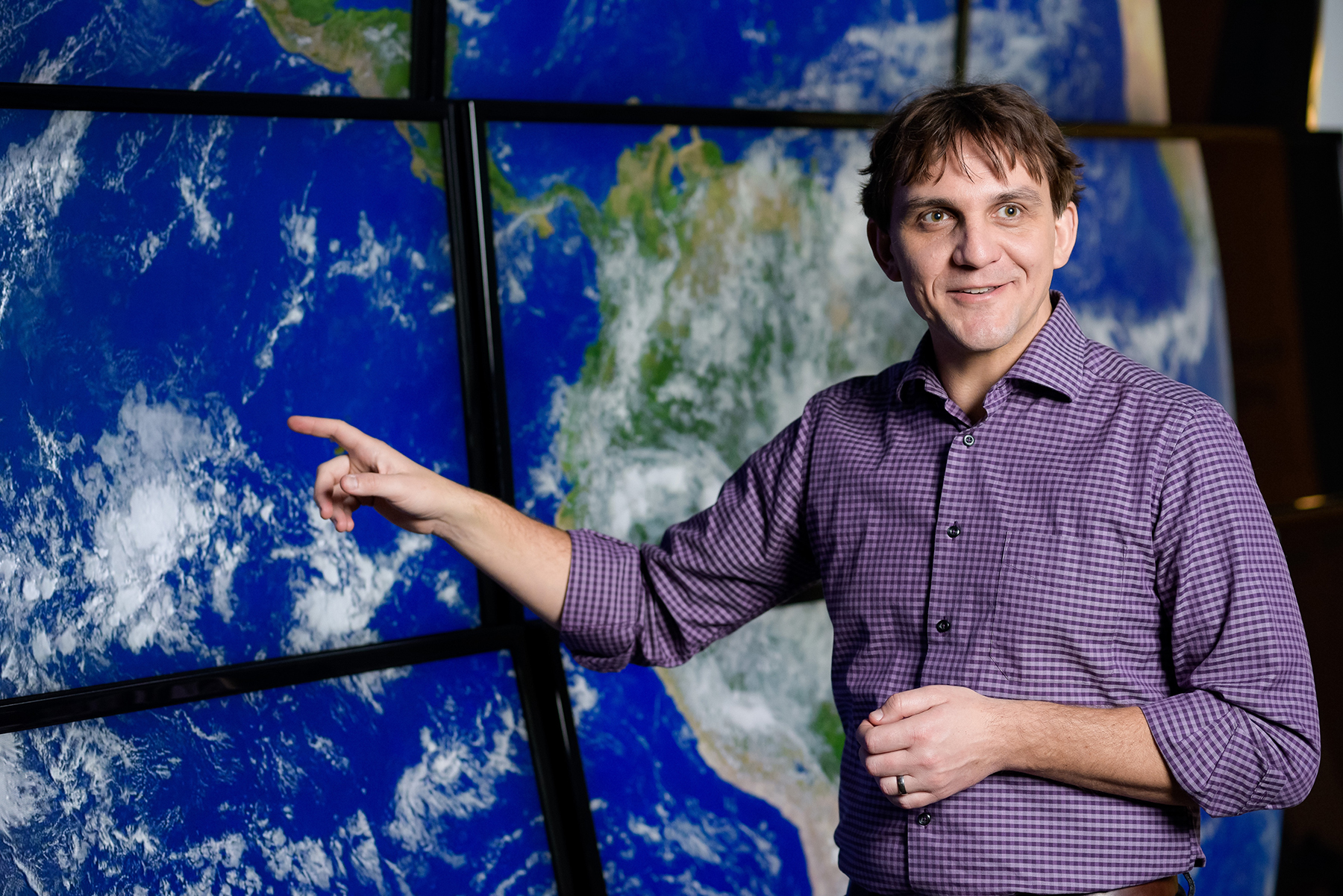“I loved rocks,” Daniel Horton (Ph.D. ’11) confessed, when asked what first attracted him to environmental science. As he tells it, his passion for Earth’s tactile wonders was instant, if somewhat accidental, since he was only taking geology classes at Tulane University in order to complete his bachelor’s degree in physics. Horton’s love of Earth science would eventually lead him to pursue a second degree in atmospheric science before becoming an operational meteorologist for the U.S. Air Force. He then spent four years serving in Germany and Italy, predicting weather for bases and their pilots, before returning to the United States to pursue his doctorate in geological sciences at the University of Michigan. Horton’s dissertation, Climate Dynamics of the Late Paleozoic Ice Age, received the ProQuest Distinguished Dissertation Award in 2011. After Michigan, Horton conducted postdoctoral research in the Department of Earth System Science at Stanford University. He is now an assistant professor in the Department of Earth and Planetary Sciences at Northwestern University. In our Q&A, Horton describes his adventurous career path and how his experiences at U-M shaped him as a scientist and mentor.
What inspired you to pursue graduate work in Earth science?
Daniel Horton: Katrina hit New Orleans and I felt completely helpless while sitting in Italy. I remember thinking, “I’m a weather man, and this storm is destroying my college town, my adopted home—maybe I need a career change.” I eventually decided I needed a different perspective. So I started to look into graduate programs and ultimately ended up at Michigan.
What are you working on now?
DH: At Michigan, I studied “deep-time” paleoclimate. My thesis was about a time period 300 million years ago during the time of Pangea. I was interested in the growing and shrinking of ice sheets and their effects on sea level. I studied these ice sheets using climate models, similar to those used to predict future climate change. After I completed my thesis at Michigan, I transitioned from deep-time to contemporary and future climate studies. Since leaving Michigan, I’ve been studying the impacts of climate change on society, the attribution of extreme weather events, and most recently the co-benefits of climate mitigation solutions, including the benefits and tradeoffs of electric vehicle adoption.
What is one of the biggest obstacles that you face in your work?
To be engaged in a field that is so much a part of our media and political culture can be challenging—and discouraging.
DH: To be engaged in a field that is so much a part of our media and political culture can be challenging—and discouraging. One of the backdrops to my graduate and post-graduate education has been watching the world’s geopolitical will rise and fall with regard to action on climate change. International reports summarizing the latest findings are assembled, and nations choose to act or not. These decisions can be incredibly discouraging—particularly for those of us in the U.S., who have dedicated our lives to trying to better understand Earth’s climate system and the consequences of human-caused climate change. When one’s work is ignored, maligned, or rejected for political reasons it can be really disheartening.

What drew you to the University of Michigan?
DH: I knew that with my meteorology background and passion for geology, I wanted a program that could combine those two fields. I did some searching, and Michigan fit the bill. At U-M, I found a mentor who combined geology and atmospheric science—Professor Chris Poulsen. Additionally, one of the best things about being an Earth science grad student at Michigan was the opportunity to teach at Camp Davis Rocky Mountain Field Station. It’s in Hoback Junction, Wyoming, just south of Jackson Hole. Four years out of my five at Michigan, I was fortunate to take students into the mountains of Wyoming. It was an amazing opportunity, and I’m so happy the university supports it. The experience was incredibly important for my pedagogy at the time, and still today at Northwestern.
Did you discover any similarities between the Air Force and academia?
DH: I joke, tongue-in-cheek, that interacting with fighter pilots inspired my decision to return to academia. But truly, my time in the Air Force was nothing but great preparation. Particularly, as an officer, the Air Force spent a lot of time trying to help me become a better leader and mentor. At Michigan I was given lots of opportunities to do both—in the classroom, in my department, and in the community.
Do you have any advice for current graduate students?
The one piece of advice I have for graduate students is to build a robust and adaptable tool kit.
DH: Professor Poulsen once told me that grad school is about asking and answering the unknown, and to effectively do that, one needed to develop an extensive tool kit. My research examines a range of subjects—air quality, atmospheric circulation, extreme precipitation, planetary habitability, and deep-time paleoclimates—and the thing that allows me to study so many different subjects is a robust tool kit. Today, my tool kit contains climate models, statistical analysis, different programming languages, and machine learning. As such, the one piece of advice I have for graduate students is to build a robust and adaptable tool kit. Research and methodological skill and flexibility will allow you to pursue your interests as they change over your career.
What do you consider to be your biggest accomplishment?
DH: Having been an assistant professor for the past four years, I’ve been fortunate to mentor at the undergraduate, graduate, and postdoctoral levels. The accomplishment that brings me the most happiness and pride is when one of my mentees has success, whether it’s passing prelims, submitting a grant, or getting a paper published. These are the successes I’m most proud of.

